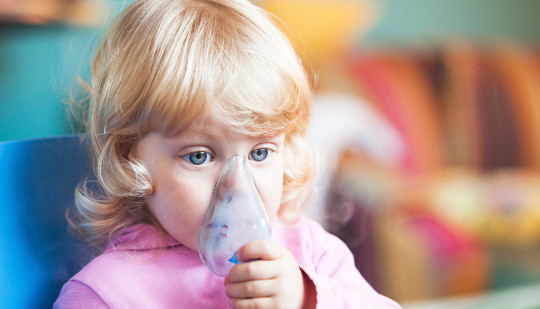
"Our findings suggest that focusing on inner cities as the epicenters of asthma may lead physicians and public health experts to overlook newly emerging 'hot zones' with high asthma rates," says Elizabeth Matsui.
Income, race, and ethnic origin have far more impact on a child’s risk for asthma than whether or not they live in an urban neighborhood, research shows.
A new study of more than 23,000 children in the United States finds no difference in asthma risk between children living in urban areas and their suburban and rural counterparts.
Poverty, Race, And Asthma
“Our results highlight the changing face of pediatric asthma and suggest that living in an urban area is, by itself, not a risk factor for asthma,” says lead investigator Corinne Keet, a pediatric allergy and asthma specialist at the Johns Hopkins Children’s Center.
Get The Latest By Email
“Instead, we see that poverty and being African American or Puerto Rican are the most potent predictors of asthma risk.”
The idea that certain aspects of urban living—pollution, cockroach and other pest allergens, higher rates of premature births, and exposure to indoor smoke—make inner-city children more prone to asthma emerged more than 50 years ago.
That’s when public health experts first described an inner-city epidemic of the respiratory condition, which includes symptoms like breathing difficulties, coughing, and wheezing.
While all those triggers do fuel asthma, investigators say they may no longer be predominantly associated with inner-city areas.
Emerging ‘hot Zones’
There has been increasing poverty in suburban and rural areas and a movement of racial and ethnic minorities out of inner cities. Public health interventions should also reflect this changing reality, researchers say.
“Our findings suggest that focusing on inner cities as the epicenters of asthma may lead physicians and public health experts to overlook newly emerging ‘hot zones’ with high asthma rates,” says senior author Elizabeth Matsui, pediatric asthma specialist and associate professor of pediatrics and epidemiology.
The research focused solely on baseline asthma risk—in other words, whether a child living in the city is more likely to have asthma than a child living in the suburbs or in the country. It was not designed to determine if inner-city children who have asthma suffer worse symptoms or require more medical attention than patients elsewhere. A separate investigation of that question is underway.
Published online in the Journal of Allergy and Clinical Immunology, the study involved surveys of parents and caregivers of 23,065 children, ages 6 to 17. About 13 percent of inner-city kids had asthma, compared with 11 percent living elsewhere. Even that small difference vanished, however, once data analysis accounted for variables such as race, ethnicity, and geographic region.
In addition, children of families with incomes below the national poverty threshold were more likely to be diagnosed with asthma and have an asthma attack that required emergency treatment than children in families with higher incomes. Family poverty had a stronger influence on asthma risk than overall neighborhood poverty.
African-American children and those of Puerto Rican descent had disproportionately higher asthma rates, at 17 and 20 percent respectively, compared with their white (10 percent), other Hispanic (9 percent), and Asian (8 percent) counterparts.
Being African American or Puerto Rican remained potent risk factors even after the influence of other variables such as neighborhood poverty, household income, and geographic area of residence were eliminated.
While the study was not designed to tease out the driving factors behind their disproportionately higher asthma rates, the investigators note that both African Americans and Puerto Ricans have a well-known risk for developing asthma, partly due to biologic and genetic differences.
Inner-city asthma rates varied widely by geographic region, with urban areas in the Northeast having the highest prevalence—17 percent of children living there had an asthma diagnosis—while urban areas in the western United States had the lowest asthma rates at 8 percent.
Some poor suburban and rural areas had asthma rates higher than those of inner-city zones. For example, the asthma prevalence in low-income suburban areas of the Northeast was 21 percent, compared with 17 percent in the corresponding urban area of that same geographic region. Low-income areas in medium metro areas in the Midwest had 26 percent asthma prevalence, compared with 15 percent in urban areas of the Midwest.
Source: Johns Hopkins University







